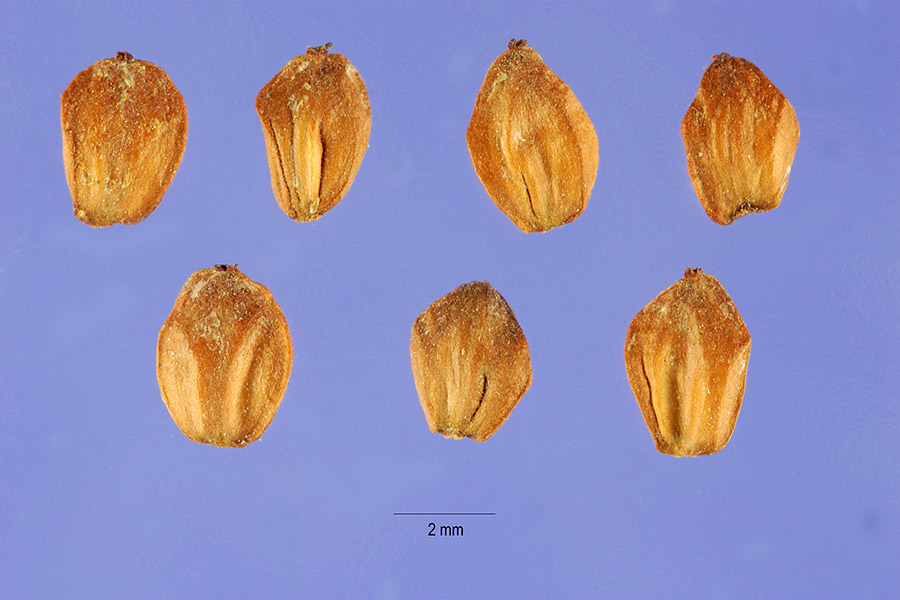Alnus maritima
|
|
|
|
Family: Betulaceae
Seaside Alder
[Alnus maritima subsp. georgiensis, moreAlnus maritima subsp. oklahomensis , Alnus maritime (Marshall) Muhl. ex Nutt.] |
Shrubs or trees , to 10 m; crowns narrow. Bark light gray, smooth; lenticels small, inconspicuous. Winter buds stipitate, ovoid to ellipsoid, 2.5--5 mm, apex rounded; stalks 1--3 mm; scales 2--3, subequal, often poorly developed, heavily resin-coated. Leaf blade narrowly elliptic, oblong, or narrowly obovate, 4.5--9 × 2--5 cm, leathery, base acute to cuneate, margins flat, teeth low, single, relatively distant, apex acute, obtuse, or rounded; surfaces abaxially mostly glabrous, resin-coated when young. Inflorescences: catkins formed during same season as flowering; staminate catkins in 1 terminal cluster of 2--4, 2--6 cm; pistillate catkins solitary in leaf axils proximal to staminate catkins. Flowering in late summer or early fall. Infructescences ovoid, 1.2--2.8 × 1.2--2.2 cm; peduncles 5--10 mm. Samaras elliptic, wings reduced to narrow, leathery ridges. 2 n = 28. Flowering late summer--early fall. Along edges of ponds and small streams, often in standing water; 0--100 m; Del., Md., Okla. Alnus maritima consists of widely disjunct populations in Delaware, Maryland, and southern Oklahoma. The populations probably represent remnants of Pleistocene and post-Pleistocene distributions and migrations. It is our only member of the predominantly Asian fall-blooming Alnus subg. Clethropsis.
Tall shrub or small tree; lvs oblong to obovate, obtuse to short-acuminate, serrate with low, distant, ascending or incurved teeth, broadly cuneate at base, dull green and glabrous beneath; principal lateral veins mostly 5-8 on a side, mostly curved- ascending, often not reaching the margins; fruiting catkins evidently pedunculate, not leafy-bracteate, relatively large, 1.5-3 cm long, often 1.5 cm thick, with very broad scales; fr ovate to obovate, 3-4 mm, 2/3 as wide; catkins in anthesis in late summer or fall (unique among our spp.); 2n=28. Edges of ponds and small streams, often in standing water; Delmarva peninsula; disjunct in s.c. Okla., where said to have been intr. from Delmarva by relocated Indians. (A. metaporina) Gleason, Henry A. & Cronquist, Arthur J. 1991. Manual of vascular plants of northeastern United States and adjacent Canada. lxxv + 910 pp. ©The New York Botanical Garden. All rights reserved. Used by permission. |


